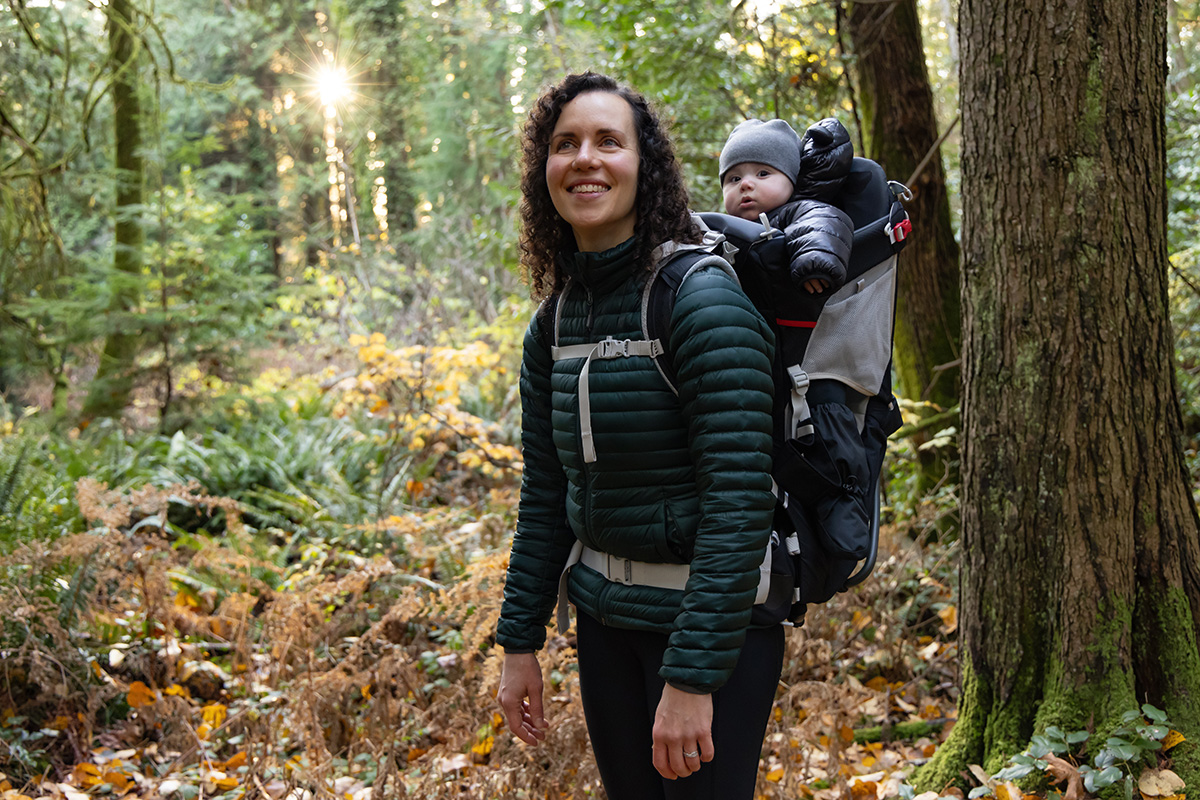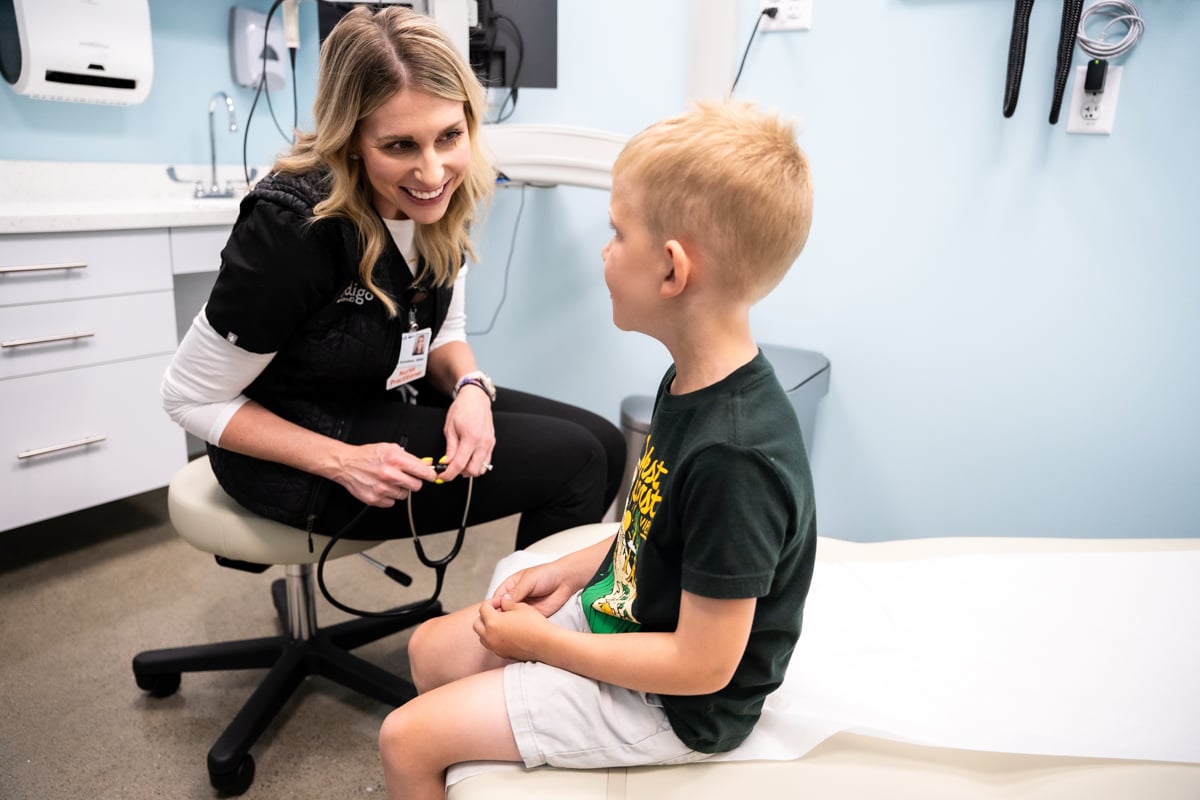Temperatures are dipping and darker days are ahead, but we Pacific Northwesterners know that fall is one of the best times to get outside.
Here are just a few reasons the PNW shines this time of year:
- Fewer crowds: Popular trailheads are packed in the warmer months, with overflowing parking lots, swarming switchbacks, and everyone jockeying for the perfect Insta pic. Fall offers smaller crowds, less noise, and more space to breathe in the fresh, crisp air.
- Larch madness: The region’s mountains and forests offer stunning fall colors, with fiery maples and golden larches lighting up the landscape.
- Ideal conditions: Cooler temps make hiking, trail biking, and exploring more enjoyable without the summer heat or bugs.
- Nature on display: When the rains return, wildlife and waterfalls put on an incredible show.
- Close-to-home fun: Across the region, there’s no shortage of fall festivals, harvest weekends, and college pigskin action.
In other words – adventure awaits. Just make sure you’re prepared.
What makes PNW fall weather so unpredictable?
The Pacific Ocean, Cascade and Olympic mountains, and the region’s lowland valleys create a perfect storm for rapid shifts in the weather. Moisture from the ocean hits the mountains, producing rain, fog or even snow at higher elevations, while temperature differences between valleys and peaks can feel drastically different just a few miles apart.
From September through November, sunny lowlands can quickly turn gray and wet at higher elevations. Gusty winds can make even mild temperatures feel dangerously cold, trails can become slick and muddy overnight, and shorter days mean daylight can disappear faster than expected.
Being prepared for all of this isn’t just about comfort – it’s about safety.
How should I dress for changing weather?
“Four seasons a day” isn’t an exaggeration in the PNW. Misty morning fog, midday sun, and evening drizzle can all make an appearance in a single outing. Our advice? Layer up, buttercup:
- Start with a moisture-wicking base layer: Opt for synthetic or merino wool fabrics that pull sweat away and dry quickly. Avoid cotton – it holds moisture and can make you cold once temperatures drop and winds pick up.
- Add an insulating middle layer: A fleece or lightweight puffer jacket traps body heat without weighing you down.
- Top it off with a breathable, waterproof outer layer: Look for a rain jacket or windbreaker that can handle drizzle, wind and the occasional downpour.
Along with layering, the right footwear and accessories can make or break your adventure:
- Waterproof shoes or boots: Trails can be muddy, slippery, and unstable. Sturdy shoes or footwear with good traction will help keep you safe on uneven terrain.
- Optional gaiters: Keep debris, mud and moisture out of your boots and off your pants.
- Hat and gloves: Even short walks can feel chilly when the wind picks up.
- Extra socks: Wet feet can turn a fun hike into a miserable outing. Carry a pair of dry, moisture-wicking socks.
Whatever the weather, you’ll be ready to peel off or pile on as conditions shift.
What type of gear should I pack for fall hikes?
Locals know the score: there’s no bad weather in the PNW – only bad gear. Wherever your adventures take you, be sure to pack these key essentials:
- First aid kit: Include bandages, antiseptic wipes, blister pads and any personal medications.
- Emergency blanket: Compact and reflective, it can help retain body heat in case you find yourself stranded or caught in sudden cold weather.
- Backpack rain cover: Keeps your gear, food, clothing, and electronics dry when sudden showers hit.
- Headlamp with fresh batteries: This is an essential if your hike runs later than expected – or if fog or storm clouds reduce visibility.
- Water: Hydration is crucial, even in cooler weather.
- Extra food: You burn more calories in cold weather. Trail mix, energy bars, or dried fruit will help keep your energy up.
- Map, compass, or GPS device: Technology can fail, so always have a reliable way to navigate your route.
What are the signs of cold exposure?
Even brief exposure to cold, wet or windy conditions can be serious:
- Hypothermia: Persistent shivering, fatigue, confusion, slurred speech, or a lack of coordination.
What to do: Hypothermia is a medical emergency — If you experience any of these symptoms, get to a warm, dry place immediately. - Frostbite: Numbness, tingling, or hard, pale skin on fingers, toes, nose, or ears.
What to do: Protect exposed skin and seek care quickly. - Rash, hives, or chilblains: Red, itchy, or painful patches on hands, feet ,or other extremities can occur from repeated exposure to cold and damp conditions.
What to do: Warm the affected areas gradually and keep them dry.
Even the best-prepared adventurers need a helping hand
No matter how well you plan, accidents or unexpected health issues can still happen – from slips on slick trails to cold-exposure symptoms. That’s where Indigo Urgent Care comes in. We’re here year-round to provide quick, friendly care so you can recover quickly and get back in action. Whether it’s a minor injury or cold-weather concern, we’ve got you covered – rain or shine.
Virtual visits makes it especially easy to get the care you need, from the comfort of home or wherever your adventures take you. Face-to-face visits with an Indigo clinician are available in Washington state and Idaho. Or, you can also stop by one of our convenient clinic locations or book a same-day or next-day appointment online.
Virtually and in person, we’re here from 8 am to 8 pm, every day.


